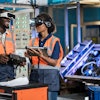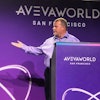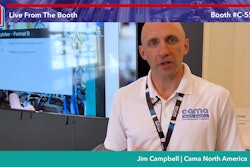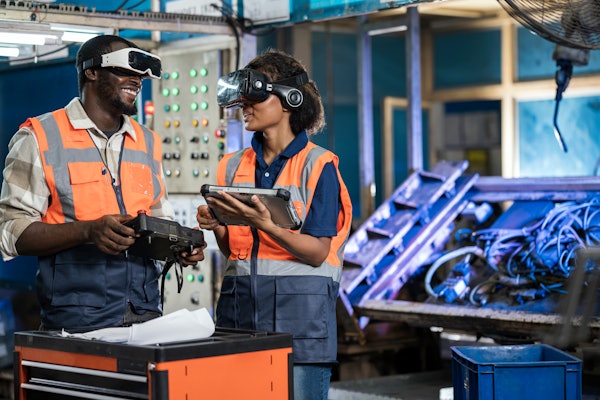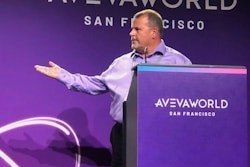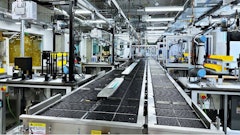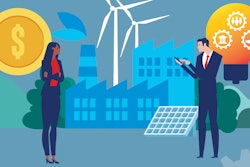Colgate-Palmolive’s 2025 Sustainability & Social Impact Strategy includes eliminating unnecessary or problematic packaging, a 33% reduction in virgin plastic, and a transition to only use recyclable, reusable, or compostable packaging by 2025. Colgate’s goals span beyond plastic reduction and far beyond 2025 though; the company also aims to reduce scope 1, 2, and 3 greenhouse gas emissions by 90% by 2040, with 2020 as the base point. Here’s how Coates describes these ambitious goals. (Note: Conversational language edited for clarity)
Packaging World:
Can you explain Colgate’s strategy to hit its 2040 emissions goal?
Cecilia Coates:
The three categories from which our emissions come are manufacturing, logistics, and procurement. Here’s how we’re tackling them: For manufacturing, its energy efficiency, renewables, and zero waste. For logistics, it’s greater operational efficiency. It’s how much weight and how much distance we’re moving products across the world. Then for procurement, it’s more about supplier engagement and working in partnership with our suppliers to reduce all the emissions in the upstream supply chain.
How is Colgate-Palmolive manufacturing becoming more sustainable?
Our biggest focus here is energy efficiency, because ultimately, the cheapest megawatt hour is the one you don’t use. We’re really focused on energy efficiency and using as little as possible to make a product and to keep growing the business while using as little energy as possible.
Then, the energy that we do use, we want to focus on making it renewable. Embedded in that carbon target is a specific sub-target of 100% renewable electricity by 2030. A lot of our factories have solar panels on site. That doesn’t mean that we’re going to get to 100% using solar panels because it’s physically impossible considering our energy load, but that is one example of a tactic that we’re using.
And then there’s our commitment to zero waste. I love this one because it’s not always an intuitive connection for people, but really waste, especially waste that ends up in landfill, has greenhouse gas emissions, either methane or CO2. So as much more waste that we can divert from landfill is less carbon emissions that we are putting out there into the atmosphere. We have a very strong commitment on zero waste, and we’re very proud that many of our factories have been certified TRUE zero waste by the U.S. Green Building Council.
We really like exploring the connection between packaging and climate. Especially, for example, a reusable toothbrush that has an application in terms of carbon emissions. We’re doing studies which basically tell us after using a toothbrush X amount of times and having replaced X amount of plastic toothbrushes, that has an implication on carbon reduction. We haven’t published numbers yet, but we’re making the study so that we know from a very technical life-cycle assessment perspective, the carbon benefits of switching to reusable products.
What role can technology play in meeting Colgate’s emissions targets?
Data and digitization is really a key enabler of how we’re going to become more efficient and reduce energy and achieve net zero. One of the things we’re focused on is using energy sensors, IoT devices, software, platforms that can help us bring visibility to where energy is being consumed. And we have examples, vendors that are present here in [PACK EXPO Las Vegas], and have their devices in our factories, and they’re using those to really empower people with information to guide the strategy and guide the energy production.
What can you do alongside suppliers to help meet emissions targets?
I want to really emphasize that this is one of our key focus areas, to engage with our suppliers. Whether they are supplying machinery, raw materials, or packaging materials, we want to talk to all our suppliers and really convey this message. Our chief procurement officers have been messaging through webinars to our suppliers, telling them how important this is for Colgate, and how we value the partnerships that we can do together to reduce our emissions together, and to collect data to make more informed decisions and more informed partnerships to get to net zero together.
Have these changes brought any challenges to profitability? If so, how do you balance it?
Usually, when we make big goals, we must reassure people that we’re committed to making them cost-neutral. But a lot of these things are expensive. Post-consumer recycled content for example, usually has a premium price. What we do is, because we’ve made a commitment, we say ‘okay, we know and understand, but we’re going to over time make it cost-neutral.’ We try to find efficiencies in other parts of the business so that we can balance it out and ultimately be able to reach our goals while cost-neutral.

